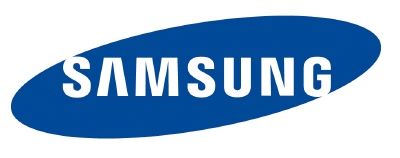Arm Cortex-A76 to Be Manufactured on Samsung’s 7LPP, 5LPE Process Tech
Arm’s Cortex-A76 will achieve 3+GHz clock speeds on Samsung’s 7LPP and 5LPE process technologies, Samsung’s foundry division announced.
Arm’s Offensive Against x86 Chips
Arm’s chips have almost always focused on low-power and extremely-low-power devices since the company’s inception. However, over the past decade, these chips have started gaining more advanced features, as well as an overall performance boost of about 20% every year, like clockwork.
This improvement rate won’t continue forever, especially now that Moore’s Law is slowing down, but it’s what has allowed Arm chips to close the gap in performance compared to x86 chips - at least at similar power consumption levels.
A 15-30W notebook x86 chip is still going to be significantly more powerful than a 5W Arm chip, even if they have the same clock speed. At the very least, the Arm chip won’t be able to use its peak performance nearly as much as the x86 chip will.
However, the question is, how would they compare when they have similar power consumption levels? Arm may soon be answering that question, and the Cortex-A76 is the first step in that direction.
Cortex-A76: Arm’s Flagship CPU Core
Cortex-A76 promises to bring “laptop performance” to all devices that use it. This claim has been made in the past by Arm, Apple, or other chip makers,. However, this time it may actually be true in the sense that most users of a Cortex-A76 Chromebook or Windows 10 laptop may not be able to feel much of a difference on day to day PC activities.
At the very least, such devices should compare favorably with budget Intel or AMD-based laptops. Such devices won’t exactly compete with a Threadripper, but Cortex-A76 may enable Arm’s entrance into mainstream notebooks.
Get Tom's Hardware's best news and in-depth reviews, straight to your inbox.
Samsung To Enable High-Performance Arm Chips
To achieve this level of performance, Cortex-A76 will take advantage of Samsung’s cutting edge 7LPP and 5LPE process technologies that will use extreme ultraviolet lithography for the first time. Considering Intel’s struggles with the equivalent 10nm process, a 7nm Cortex-A76 device should be able to outperform at least Intel’s latest Celeron or Pentium laptops, and potentially even some Core i3 laptops.
Apple has been able to outperform the Core i5 in the past with its mobile chips, but many argue this wasn't a fair comparison because Apple’s chips throttle more quickly. At 7nm and with a potentially higher power consumption level in notebooks, Cortex-A76 may be able to show consistent high-performance for longer periods of time.
Kelvin Low, vice president of marketing, Physical Design Group at Arm said:
“Arm and Samsung Foundry have collaborated on a large number of chips using Artisan physical IP on Samsung Foundry process technologies. Samsung Foundry’s 7LPP and 5LPE nodes are innovative process technologies which will meet our mutual customers’ needs to deliver the next generation of advanced system-on-chips (SoCs) from mobile to hyperscale datacenters.”
Samsung revealed the roadmap from the 7nm EUV to the 3GAAE (3nm Gate-All-Around-Early) process at the Samsung Foundry Forum 2018 Korea, in Seoul. The company's 7LPP process is expected to be completed in the first half of 2019, so we may see 7nm Cortex-A76 devices shortly after.
Lucian Armasu is a Contributing Writer for Tom's Hardware US. He covers software news and the issues surrounding privacy and security.
-
jeremyj_83 There is already information out there as to how ARM compares to x86 when they have similar TDP. https://www.servethehome.com/cavium-thunderx2-review-benchmarks-real-arm-server-option/ You find that the ARM chips have lower single threaded performance than the x86 chips, but is very competitive when it can use all its threads.Reply -
reggjoo Maybe this one will have competitive single threaded chops, as multicore doesn't seem to be a problem, especially with so many governors for their chips. not having the best single core performance hasn't hurt arm at all.Reply -
JonDol Performance alone is not enough to gain market share. Without software it will be difficult to attract the existing users. I personally don't expect these chips 10 years from now to be a significant threat for the existing x86 ecosystem.Reply
